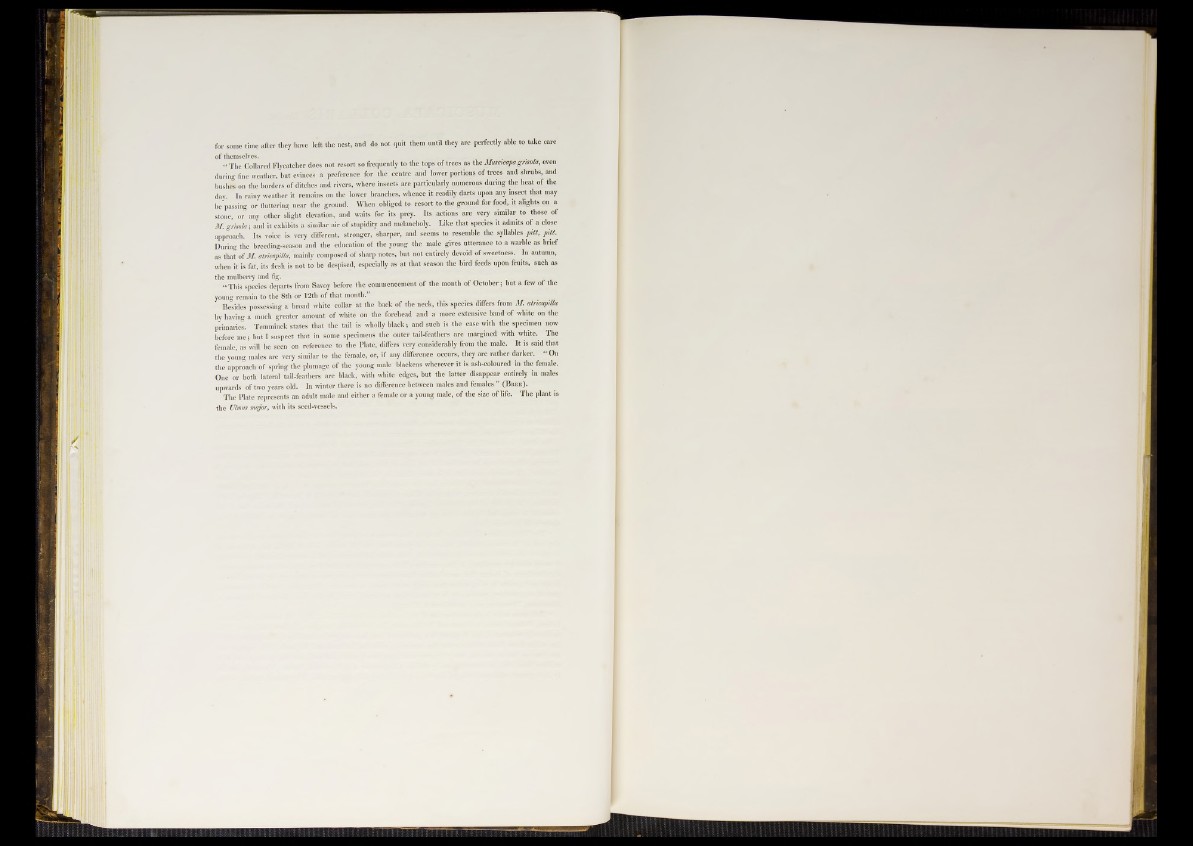
for some time after they have left the nest, and do not quit them until they are perfectly able to take care
o f themselves. .
“ T he Collared Flycatcher does not resort so frequently to the tops of trees as the Muscicapagrrnla, even
during fine weather, bnt evinces a preference for the centre and lower portions o f trees and shrubs, and
boshes on the borders of ditches and rivers, where insects are particularly numerous during the heat o f the
day- In rainy weather it remains on the lower branches, whence it readily darts upon any insect that may
be passing or fluttering near the ground. When obliged to resort to the ground for food, it alights on a
stone, or any other slight elevation, and waits for its prey. Its actions are very similar to those o f
M . grisola; and it exhibits a similar air o f stupidity aud melancholy. Like that species it admits o f a close
approach. ’ Its voice is very different, stronger, sharper, and seems to resemble the syllables p itt, p ill.
During the breeding-seasou and the education of the young the male gives utterance to a warble as brief
as that of M. atrimpilla, mainly composed of sharp notes, but not entirely devoid of sweetness. In autumn,
when it is fat, its flesh is not to be despised, especially as at that season the bird feeds upon fruits, such as
the mulberry and fig.
“ This species departs from Savoy before the commencement of the month of October; but a few o f the
young remain to the 8th o r 12 tll o f that month.’’
Besides possessing a broad white collar a t the back o f the neck, this species differs from M. atricapiUa
by having a much greater amount of white on the forehead and a more extensive band o f white on the
primaries. Temminck states that the tail is wholly black; and such is the case with the specimen now
before me; but I suspect that in some specimens the outer tail-feathers are margined with white. The
female, as will be seen on reference to the Plate, differs very considerably from the male. I t is said that
the young males are very similar to the female, or, if any difference occurs, they are rather darker. “ On
the approach o f spring the plumage of the young male blackens wherever it is ash-coloured in the female.
One or both lateral tail-feathers are black, with white edges, but the latter disappear entirely in males
upwards of two years old. In winter there is no difference between males and females ” (Biiee).
T he Plate represents an adult male and either a female o r a young male, o f the size o f life. The plant is
the Ulmus major, with its seed-vessels.